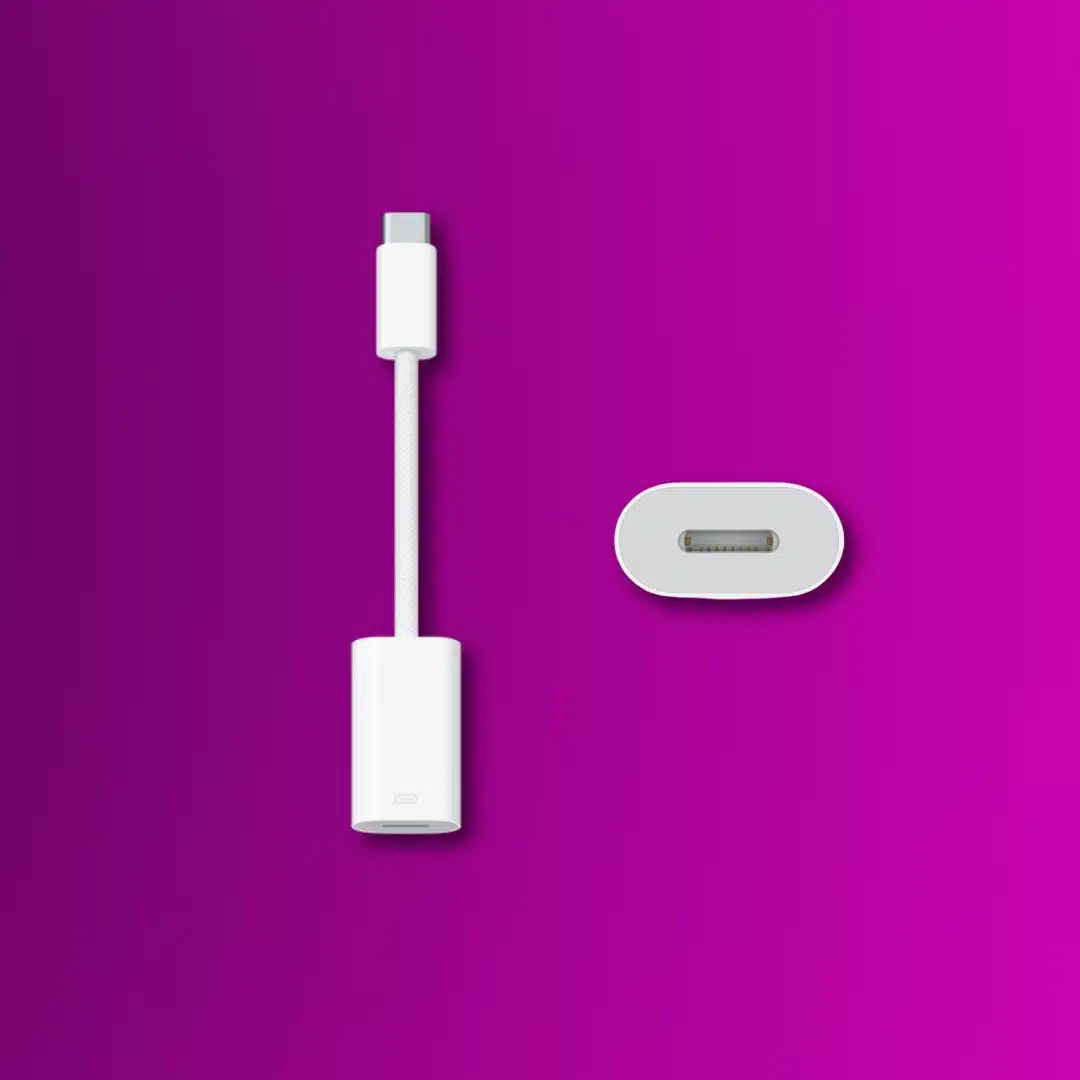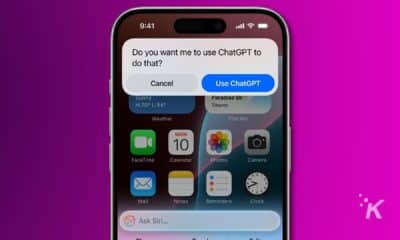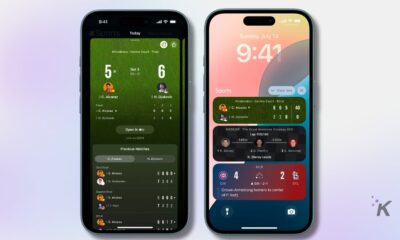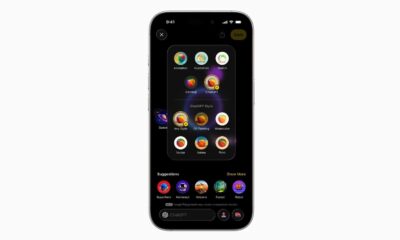Apple
This new terrible $29 dongle for iPhones is good, actually
$29 gets you a dongle to reuse your Lightning accessories.
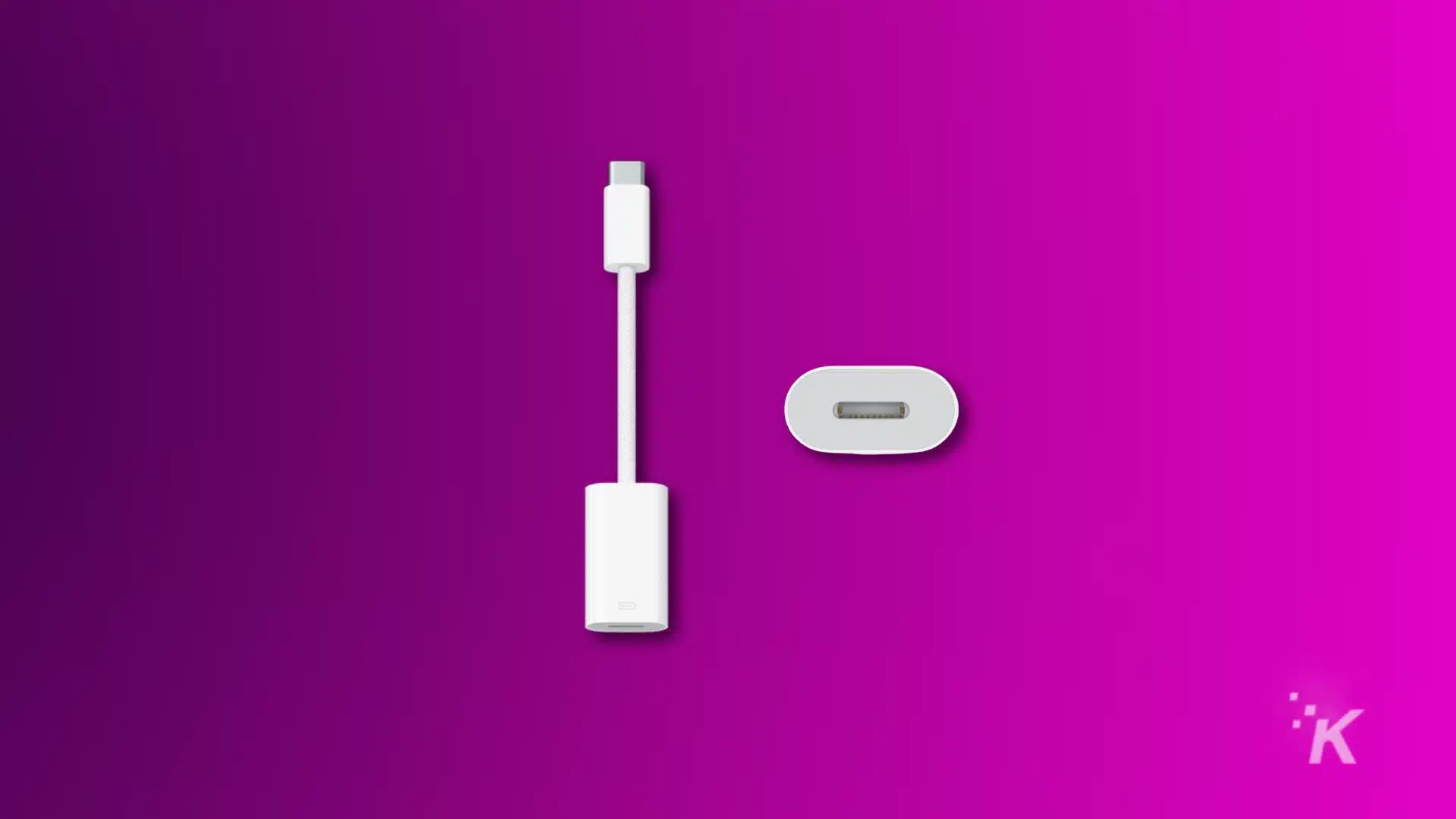
Just a heads up, if you buy something through our links, we may get a small share of the sale. It’s one of the ways we keep the lights on here. Click here for more.
Apple’s decision to switch the iPhone charging and data port from its proprietary Lightning connector to the universally accepted USB-C standard was probably the worst-kept secret in the industry.
For months, there were leaks that Apple was planning to make the swap on the iPhone 15. Apple even confirmed the switch was inevitable after the European Union required them to do it.
Apple’s new release lets you use old Lightning cables with new iPhones, but it’s pricey–as expected from Apple.
Apple has not disappointed on either front. Hours after the company introduced its newest high-end iPhone models on Tuesday, a new dongle turned up in the Apple Store.
The USB-C to Lightning adapter does just what the name implies–makes Lightning devices compatible with USB-C ones.
The rub? It costs $29.
$29 saves you from re-buying all your Lightning-tipped accessories
New iPhones with USB-C? You'll need a new dongle to use all your existing Lightning-connector devices and accessories with it.
Now, I know what you’re thinking: Why would anyone want this?
Believe me, I had the same thought — after all, customers upgrading from old iPhone models can just buy new USB-C cables at places like Amazon, which are sold for far less than the $29 Apple wants for its adapter.
But I actually think there’s a compelling reason for Apple to sell this adapter, so hear me out.
First, it’s important to note that Apple didn’t just decide this week to switch its consumer products to USB-C.
Macs have included USB-C ports for several years now. The data and charging port on nearly all of its current iPad models uses USB-C.
The iPhone has been the lone hold-out, and for one good reason: Last month, Apple said iPhone sales brought in over $39.6 billion in net sales revenue during its last financial quarter.
That accounted for nearly half of the $80 billion in overall sales revenue that quarter. Half!
Even with rumors that Apple was about to refresh its iPhone models–which predictably happen around September of every year–people were still buying iPhones. A lot of them.
I’d be lost without this Lightning accessory
When people buy iPhones, they also tend to buy accessories–cases, extra cables, and stuff like that. If you think about how many iPhones there are in the world (over 2.3 billion!), that’s a lot of users with a lot of Lightning accessories.
I’m in this camp. Back in 2013, I bought a small iHome clock radio to use with my iPhone 5C (I don’t care what anyone says; it was a great phone). Over the years, I’ve come to depend on this radio more and more.
The iPhone 5C has since been replaced with an iPod Touch, which I use primarily to run a white noise app and to set multiple wake-up alarms.
The radio has become part of my bedtime regimen, including the white noise app sounds. I bought two spares at a garage sale, just in case…
What didn’t occur to me this week was–what happens if the iPod Touch dies?
Apple stopped selling the iPod Touch last year, which means affordable replacements are going to be pretty hard to find soon. The more reasonable option would be to use an iPhone–after all, it runs the same apps.
But it doesn’t have a Lightning connector, and with the radio having no other way to play audio from an Apple device, it looks like I’ll be buying one of these Lightning to USB-C adapters at some point.
My case might not be super common, but it probably isn’t entirely unique, either. There are tons of speakers, headphones, and external batteries with built-in Lightning cables that work just fine today but won’t plug into iPhones going forward.
If you are someone who spent over $250 on a pair of headphones that connect exclusively via Lightning, chances are you want to get as much mileage out of them as possible. And that’s where the Lightning to USB-C adapter comes in handy.
The USB-C to Lightning dongle will save waste
There are also compatibility concerns with devices that can’t be easily upgraded. For example, vehicles with infotainment systems that are designed for Lightning cables.
For years, drivers knew that if they picked up a Lightning cable with MFI (Made For iPhone) certification, it would work with CarPlay.
The switch to USB-C raises questions. Will third-party USB-C cables be compatible with existing CarPlay systems? Will GPS and other tools glitch with sub-standard cables?
No one really knows the answer to this, and we won’t get an answer until it gets tested by users on their daily commute.
With the product page for the Lightning to USB-C adapter specifically mentioning CarPlay, Apple might know there is an issue. Those who purchase the dongle can still use Lightning cables that support CarPlay with newer iPhones, providing peace of mind.
That peace of mind, of course, costs $29. While that might seem high (because it is), it’s actually a really important benchmark for third-party manufacturers who might want to start selling a similar dongle of their own.
Third-party device makers will have to come well under Apple’s $29 price if they want their dongles to be competitive. They’ll also need to bring new features, like right-angled connectors or longer cables.
Eventually, none of this will matter.
Apple’s switch to USB-C for iPhones will only accelerate the adoption of that standard in the world of consumer electronics.
Just as most people eventually moved on from the 30-pin ports that graced the earliest iPods and iPhones, the same will be true for the Lightning connector. At that point, the dongle won’t be needed at all.
Until then, it’s nice to know the option is there.
New iPhones with USB-C? You'll need a new dongle to use all your existing Lightning-connector devices and accessories with it.
Have any thoughts on this? Drop us a line below in the comments, or carry the discussion to our Twitter or Facebook.

